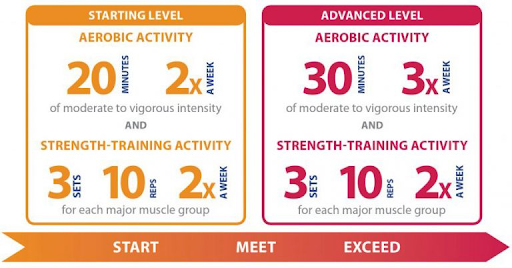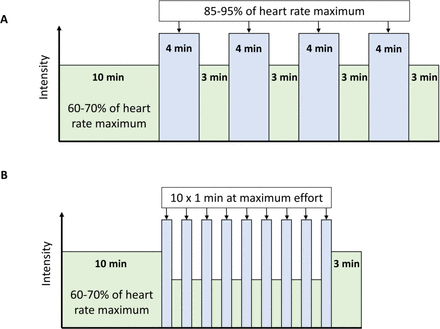
Don’t Forget Your Heart: Why Exercise After a Spinal Cord Injury is a Game-Changer
February 18, 2025
Matthew Farrow
Edited by:
Ceren Yarar-Fisher,
Sana Chahande,
Jia Li
Why Moving matters
Individuals living with SCI face challenges in achieving consistent and sufficient physical activity. However, staying inactive can increase the risk of heart disease, stroke, and even early death1.
The good news? Exercise can flip the script. Not only does it help improve heart health, but it also boosts mental health, reduces chronic and nerve pain, and improves quality of life2.
How Much Exercise Do You Need?
To reduce cardiovascular disease risk, the international SCI-exercise guidelines3 recommend:
- 3 sessions of aerobic exercise per week, at moderate-to-vigorous intensity, lasting at least 30 minutes each.
- Strength training twice a week, focusing on all major functioning muscle groups.
However, individuals capable of achieving more should be encouraged to do so4. The more you do, the greater the benefit!

Exercise guidelines for individuals with chronic (>1 year after injury) SCI. More details can be found at https://sciguidelines.ubc.ca/.
Spice It Up with HIIT
Tight on time or bored of the same routine? High-intensity interval training, often referred to as ‘HIIT’ may be a good option. Alternating short bouts of close to ‘all-out’ exercise, with periods of rest or recovery, is likely to produce similar cardiovascular benefits5. For maximum benefit, try to combine regular bouts of longer duration moderate-intensity exercise and short bouts of vigorous exercise6.

Examples of HIIT routines that could be used for adapted exercise (e.g., arm crank, ski-erg). You can estimate your maximum heart rate for upper-body exercise by subtracting your age from 200. Source: Moholdt et al.7
What’s the Best Exercise? The One You’ll Actually Do
There is not one form of exercise that is superior to another; the important components are duration and intensity. Hybrid exercise (i.e., functional electrical stimulation (FES)-leg and arm) is likely to elicit a greater cardiovascular demand compared to purely arm exercise8. This may allow individuals with tetraplegia, who typically have a blunted heart rate responses to exercise, to meet the intensity recommendations.
Breaking up sedentary time
Finally, outside of structured exercise, individuals should try to reduce sedentary time to reduce heart-related disease9. Try to break up sedentary time with shorts bursts of activity. Examples include:
- Propel your wheelchair around the room.
- Using a standing frame if possible.
- Do some stretching, arm circles, or balance exercises.
- Explore adapted yoga for relaxation and flexibility.
Of course, every individual is unique in terms of what exercise and movement is feasible for them, the key point is to keep moving!
Need inspiration? Check out https://sciguidelines.ubc.ca/ for resources, workout videos, and more tips to get moving.
Please remember to consult a healthcare provider before starting an exercise program.
Literature
- Cragg JJ, Noonan VK, Dvorak M, Krassioukov A, Mancini GBJ, Borisoff JF. Spinal cord injury and type 2 diabetes Results from a population health survey. Neurology. Nov 2013;81(21):1864-1868. doi:10.1212/01.wnl.0000436074.98534.6e
- Booth FW, Roberts CK, Laye MJ. Lack of Exercise Is a Major Cause of Chronic Diseases. Article. Compr Physiol. Apr 2012;2(2):1143-1211. doi:10.1002/cphy.c110025
- Martin Ginis KA, van der Scheer JW, Latimer-Cheung AE, et al. Evidence-based scientific exercise guidelines for adults with spinal cord injury: an update and a new guideline. Spinal Cord. Apr 2018;56(4):308-321. doi:10.1038/s41393-017-0017-3
- Ekelund U, Tarp J, Steene-Johannessen J, et al. Dose-response associations between accelerometry measured physical activity and sedentary time and all cause mortality: systematic review and harmonised meta-analysis. BMJ. 2019;366:l4570. doi:10.1136/bmj.l4570
- Schwendinger F, Infanger D, Lichtenstein E, et al. Intensity or volume: the role of physical activity in longevity. European Journal of Preventive Cardiology. 2024;32(1):10-19. doi:10.1093/eurjpc/zwae295
- Lee DH, Rezende LFM, Joh H-K, et al. Long-Term Leisure-Time Physical Activity Intensity and All-Cause and Cause-Specific Mortality: A Prospective Cohort of US Adults. Circulation. 2022;146(7):523-534. doi:doi:10.1161/CIRCULATIONAHA.121.058162
- Moholdt T, Silva CP, Lydersen S, Hawley JA. Isolated and combined effects of high- intensity interval training and time-restricted eating on glycaemic control in reproductive-aged women with overweight or obesity: study protocol for a four-armed randomised controlled trial. BMJ Open. 2021;11(2):e040020. doi:10.1136/bmjopen-2020-040020
- Figoni SF, Dolbow DR, Crawford EC, White ML, Pattanaik S. Does aerobic exercise benefit persons with tetraplegia from spinal cord injury? A systematic review. The journal of spinal cord medicine. Sep 2021;44(5):690-703. doi:10.1080/10790268.2020.1722935
- Young DR, Hivert M-F, Alhassan S, et al. Sedentary Behavior and Cardiovascular Morbidity and Mortality: A Science Advisory From the American Heart Association. Circulation. 2016;134(13):e262-e279. doi:doi:10.1161/CIR.0000000000000440